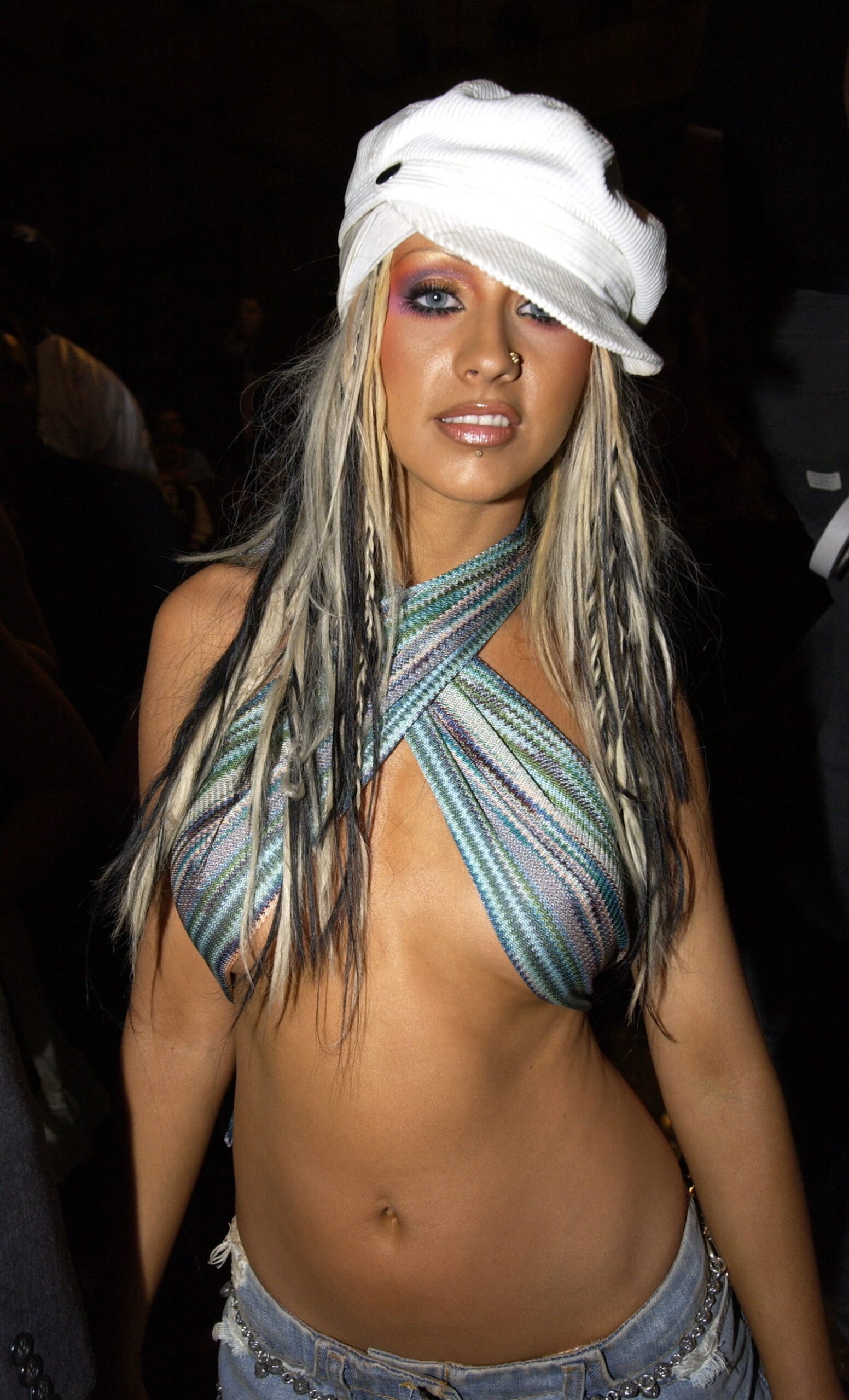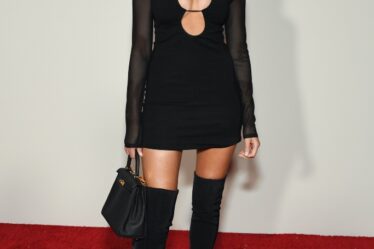
Long before skunk stripes, dip-dyed ends, and two-toned neon became viral TikTok hair trends, Christina Aguilera broke beauty ground with her legendary take on dual-colored, black-on-blonde hair. It was an especially bold look, even for the infamously experimental early aughts. Though it’s only now, 20 years later, that I realize the true meaning of Aguilera’s statement hair, and how it symbolized so much more than anyone recognized at the time.
Hear me out. It’s August 29, 2002, the 18th MTV Video Music Awards (or VMAs). It was a wild night for everyone: Jennifer Lopez was cosplaying as a sexy primetime lawyer, and Donald Trump inexplicably and aimlessly, roamed the red-carpet. But Christina Aguilera? Her eclectic ensemble actually made perfect sense.
To set the scene: Aguilera was on top of the world. In 2000, she’d won a Grammy Award for Best New Artist after the monumental success of her self-titled debut album and its chart-topping singles “Genie in a Bottle,” “What a Girl Wants,” and “Come On Over Baby (All I Want Is You).”
KMazur
At the 2002 VMAs, however, Aguilera was on the cusp of releasing her next major studio album, Stripped, the first over which she’d had complete creative control. Aguilera personally oversaw the music, style, and lyrics, seeking to free herself from her “contrived” pop princess persona. And Aguilera knew it would be controversial. Her external shift from butter-blonde good-girl-next door to a two-toned provocateur with a topless album cover was intended to be a true reflection of her internal and musical transformation. But some audiences were appalled.
The Stripped track-list—which included hits “Beautiful,” “Fighter,” and “Can’t Hold Us Down”—addressed themes of sexuality, empowerment, and feminism throughout, daring to do so at a time when women were notoriously assigned one of two labels: “good” or “bad.” At the time, openly acknowledging one’s sexuality was “bad”—especially for pop singers. But Aguilera, having just earned autonomy over her music and outward expression, used this to her advantage, debuting a sultry alter-ego aptly named “Xtina” along with the album. This way, her “bad” label could be assigned to “someone else” entirely. (Or, perhaps, she was asserting that they were in one in the same.)
KMazur


